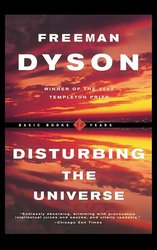Last and First Men: A Story of the Near and Far Future is a "future history" science fiction novel written in 1930 by the British author Olaf Stapledon. A work of unprecedented scale in the genre, it describes the history of humanity from the present onwards across two billion years and eighteen distinct human species, of which our own is the first and most primitive. Stapledon's conception of history is based on the Hegelian Dialectic, following a repetitive cycle with many varied civilizations rising from and descending back into savagery over millions of years, but it is also one of progress, as the later civilizations rise to far greater heights than the first. The book anticipates the science of genetic engineering, and is an early example of the fictional supermind; a consciousness composed of many telepathically-linked individuals. A controversial part of the book depicts humans, in the far-off future, escaping the dying Earth and settling on Venus — in the process totally exterminating its native inhabitants, an intelligent marine species. Stapledon's book has been interpreted by some as condoning such interplanetary genocide as a justified act if necessary for racial survival, though a number of Stapledon's partisans denied that such was his intention, arguing instead that Stapledon was merely showing that although mankind had advanced in a number of ways in the future, at bottom it still possessed the same capacity for savagery as it has always had.






